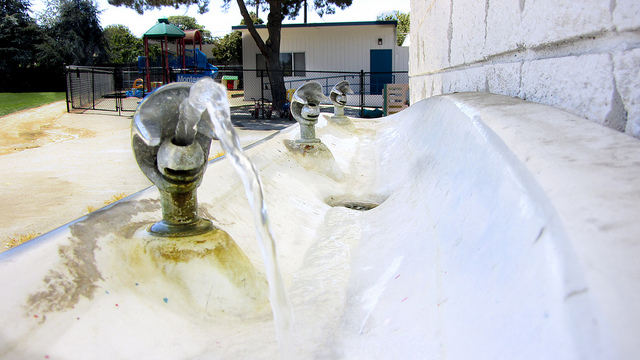There’s Something in the Water
It’s National Lead Poisoning Prevention Week, so let’s take a minute to address one pervasive pathway to lead exposure that everyone in Montana should be talking about: our drinking water.

It’s National Lead Poisoning Prevention Week, so let’s take a minute to address one pervasive pathway to lead exposure that everyone in Montana should be talking about: our drinking water.
Lead is a potent neurotoxin that impairs how children learn, grow, and behave. Even low levels of exposure have been linked to lower IQ, hyperactivity, and damage to children’s central and peripheral nervous systems. Kids are especially vulnerable to absorbing this toxin. The bottom line: there is no safe level of lead, especially for our children.
Unfortunately, there are many ways kids can come in contact with lead. You might immediately think of lead paint, which was commonly found in homes until it was banned in 1978. Or you might think of lead particles in dust, or in the dirt our children play in.
Yet in the wake of Flint, we’re now all too aware that this dangerous toxin was used to construct another cornerstone of our lives: our private water delivery systems. Now we’re facing the repercussions, as this toxic threat infiltrates the water of communities across the nation.
Lead has even been found in Montana schools, flowing from faucets and fountains our children drink from every day. Our research found that over three-quarters of the school water samples taken in the past ten years contain lead.
In all likelihood, these confirmed cases are just the tip of the iceberg. Most schools have at least some lead in their pipes, plumbing, or fixtures. And where there is lead, there is a risk of contamination. So maybe that bubbler outside your 3rd grader’s classroom tested clean last week. But who knows what the water would look like if they tested it again today? The corrosion of lead pipes and fixtures is inconsistent, meaning that a tap that tests clean today might spew out a big slug of lead tomorrow.
How do we address this widespread threat? The answer is simple. We must shift the paradigm from reactive to proactive.
Instead of waiting for tests to confirm that our children have been drinking lead, we can start by immediately installing filters certified to remove lead on every faucet and fountain used for drinking or cooking in schools across the commonwealth. And because there is risk wherever there is lead, we’ll also need to “get the lead out” by replacing the lead pipes, solder and fixtures that cause the contamination in the first place.
And finally, because even low levels of lead can irreversibly damage children’s health, schools must shut off taps where lead in water exceeds one part per billion, as recommended by the American Academy of Pediatrics. This health-based standard stands in contrast with the current ”action level” of 15 ppb, which was designed by EPA to trigger system-wide action by water utilities, not to guarantee safe water for children at every tap.
So as we mark the end of National Lead Poisoning Prevention Week, now would be an excellent time for our current and aspiring elected officials to declare their commitment to “get the lead out” of drinking water at our schools. Our children can’t wait any longer.
